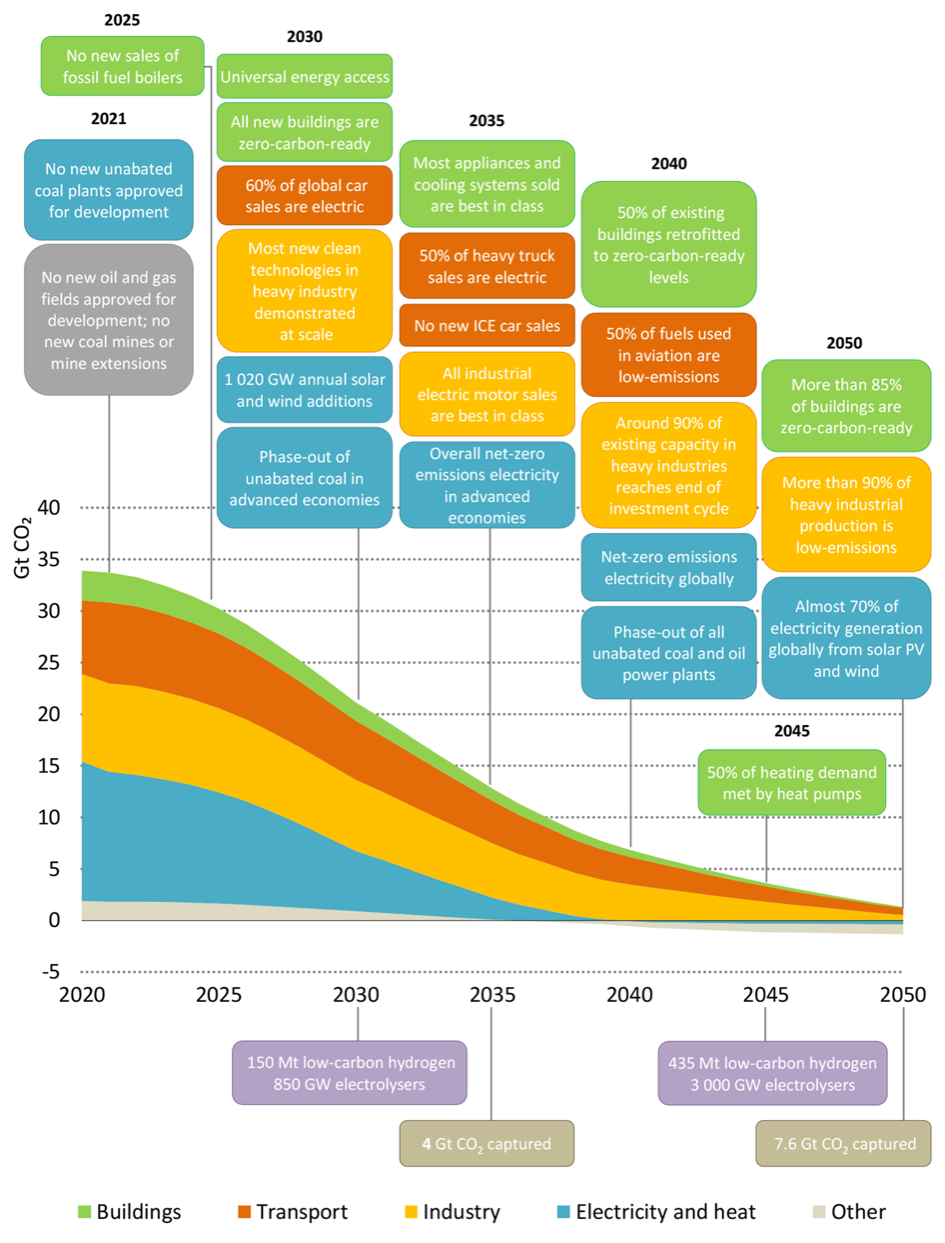International Energy Agency points the way to a climate-neutral global economy
The dangers of the climate crisis are becoming visible to more and more people and institutions. Even the International Energy Agency (IEA), until recently the most powerful lobbyist for the oil and gas industry, has recognised the signs of the times.
Text: Dr Gerhard Wagner

Extremes in weather are accumulating in 2021. In February, it snowed heavily in the Middle East. In Jerusalem, snow lay on the Dome of the Rock and Israeli children could make snowmen. In July, more than 150 people died in Germany as a result of a flood disaster, and extreme temperatures of over 40 degrees Celsius led to huge forest fires in North America, Russia and Mediterranean countries. Although not every one of these weather phenomena can be directly attributed to climate change, climate change is reflected in the growing frequency of extreme weather events.
Calls for effective global climate policy
Now the International Energy Agency (IEA) has presented a detailed decarbonisation scenario for the global economy. It calls for the consistent global expansion of renewable energies, electromobility, climate-neutral buildings and the hydrogen industry. Going forward, no more money should be spent on the additional extraction of coal, gas and oil. This is the only way to limit global warming to 1.5 degrees Celsius.
Turning a new leaf
These demands are particularly remarkable because the IEA called for more oil to be extracted just 15 years ago, as oil would become scarce, it argued. Swisscanto expects that the current IEA roadmap at the COP26 climate summit (ukcop26.org) in November 2021 will receive a great deal of attention from politicians and will be discussed widely.
The International Energy Agency roadmap
The decarbonisation scenario pursues the goal of achieving net CO2 neutrality by 2050. The measures required according to the assessment of the IEA can be found in the following figure of the IEA.
Figure: Milestones of the International Energy Agency's (IEA) decarbonisation plan

- With immediate effect, i.e. in 2021, there should be no further approvals of new coal-fired power plants, oil production and natural gas production. According to the plan of the IEA, the era of fossil fuel use must come to an end in the foreseeable future.
- From 2025, heating systems that use fossil fuels should no longer be sold. In the future, heating should be provided to a far greater extent by electricity via heat pumps.
- From 2030, all newly built houses should be heated or cooled in a climate-neutral manner. In addition, 60 percent of the cars sold are expected to be electric cars by 2030. Moreover, 1,020 gigawatts of wind and solar energy are to be added annually. That's four times higher than today.
- According to the IEA's decarbonisation scenario, in 2035 50 percent of trucks sold must be electric. Passenger cars with combustion engines must no longer be sold. Furthermore, four gigatonnes of CO2 (of 26 gigatonnes of CO2 produced annually) are to be captured and stored underground.
- By 2040, 50 percent of all existing buildings should be climate-efficient. In addition, 50 percent of the fuel for aviation should be low-emission.
- More than 400 megatonnes of hydrogen are expected to be available in 2045. The use of hydrogen ranges from steel production to synthetic lubricants and aviation fuel.
- According to this scenario, the goal could be achieved in 2050 if everything works out.
The CO2 price must increase
Climate economists are aware that this will not work without a rising CO2 price. However, there is still a lack of political will in many places. This attitude will no longer be affordable in view of the urgency of the problem. In its 2030 roadmap, the IEA sets a price of 120 euros/tonne of CO2 for industrialised countries. Today, CO2 prices are far below this in most industrialised countries.
Investment opportunities of climate-friendly technologies
Over the next few years, Zürcher Kantonalbank will closely monitor which regions and countries are making what degree of progress. Our aim is to assess the development and growth of climate-friendly technologies and services as accurately as possible. After all, climate-friendly investment is also about whether and how profitable growth will be for the companies.
Outperformance thanks to climate protection over the last five years
The products in the Swisscanto Sustainable range consistently avoid companies with CO2-intensive business models in all sectors as well as the associated equities and bonds. We completely exclude investments in companies that extract fossil fuels. Conversely, our portfolios are overweighted in energy-efficient and low-CO2 business models. With this orientation, our sustainable equity strategies have been able to achieve a significant excess return over the past five years compared to their benchmarks.
